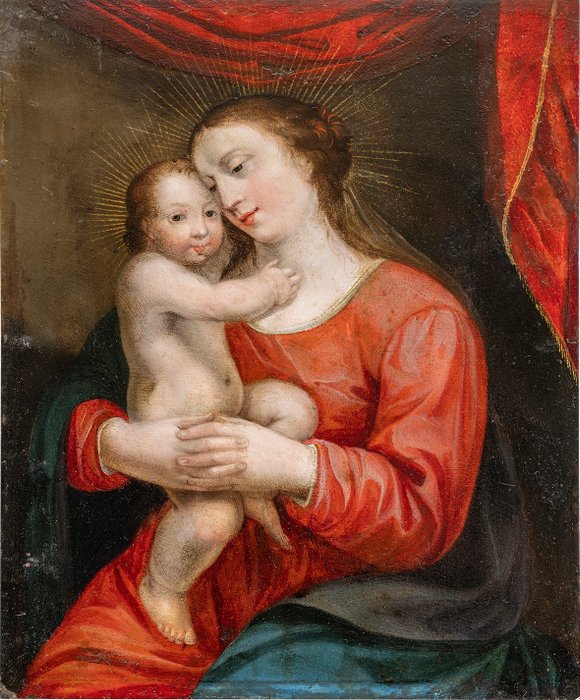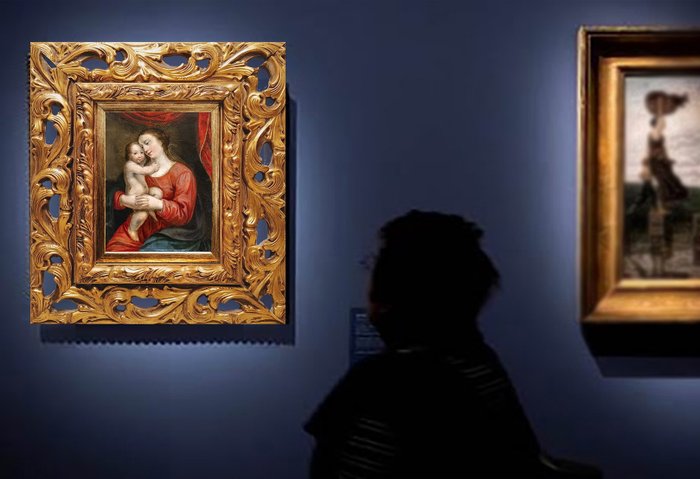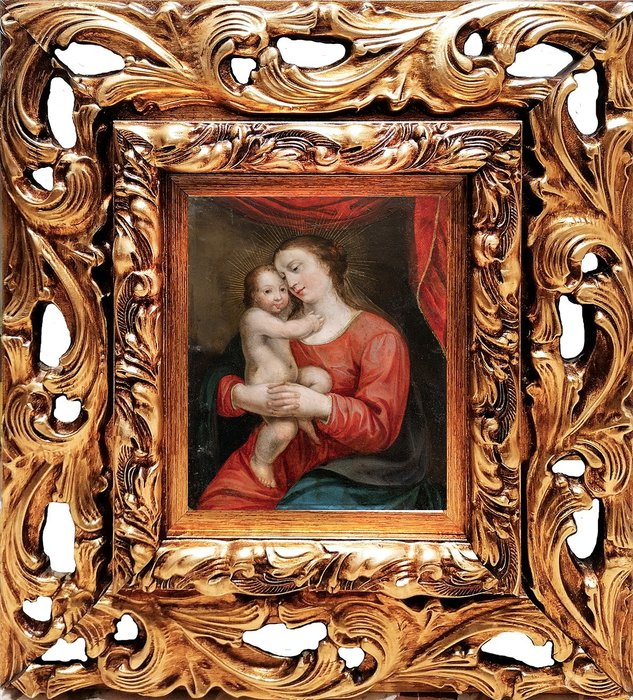Advert Description
Are you interested in this item? This item is up for auction at Catawiki. Please click on "respond to advert" (orange button) to get redirected to the Catawiki website. Catawiki’s goal is to make special objects universally available. Our weekly auctions feature thousands of unusual, rare, and exceptional objects you won’t find in just any store. LOMBARD PAINTER OF THE XVI CENTURY
School of AMBROSIUS BENZON
(Lombardy, around 1495 – Bruges, 1550)
Madonna and Child
Oil on copper, cm. 25.5 x 21
NOTES: Publication of the catalog of works from the Intermidiart collection. Certificate of Guarantee and Lawful Origin; Unframed artwork:
Made on copper, this Madonna and Child dates back to the 16th century and is presumed to have been created within the pictorial culture of northern Italy. As far as the attribution is concerned, the idea of a Lombard taste in the composition and in the traits of Flemish origin can be considered - with caution - correct. Probably the subject of the Madonna and Child is one of the most popular iconography in the entire history of both Western and Eastern art. The Madonna has appeared since the dawn of medieval painting and remained a constant subject as long as religious themes were prevalent in artistic production (that is, until the 19th century when themes inspired by everyday life began to be introduced).
From a formal point of view, the work has a fine workmanship. In fact, the executing artist shows that he has a refined technique that allows him to obtain a natural rendering of the subject, indicating a way of painting still linked to the culture of Mannerism
The scene is described - probably - inside a room with an almost neutral background, with the upper and right side the presence of a drapery of the bright red curtain, which surrounds the Holy Family, with the aforementioned Madonna with red dress and blue cloak lovingly embracing the naked and undressed Child Jesus. From a compositional point of view, the image of the Madonna with Jesus occupies all the space, represented here in three quarters and half-length, with her gaze distant from the observer, almost absent, but facing downwards. The colors of the dress are highlighted so bright and warm, making focal points of the composition.
With regard to the stylistic features, however, probably intended to decorate the altar of a noble chapel, we are faced with a representation that was performed by a capable master of the Italo-Flemish school, active between the end of the sixteenth century and the beginning of the seventeenth century and gifted good technical and stylistic skills.
In fact, the work bears a collector's attribution and is confirmed - by a well-known Italian auction house - as part of the workshop of Ambrogio Benzone or Ambrosius Benson (Lombardy 1495 circa - Bruges 1550). Because of the name Ambrogio, Benzone was probably born near Milan. He moved to Bruges as a young man, taking the name Ambrosius Benson. Initially he was a pupil of the painter Gerard David, by whom he was deeply influenced. With Adriaen Isenbrandt and Jan Provost he was part of the last generation of Bruges painters, characterized by a break with the Gothic tradition and the introduction of the innovations of the Italian Renaissance. He had two sons, Willem and Jan, both painters. Joachim Spaers and Jacob Vinson trained in his workshop.
The pictorial quality, albeit comparable to that of the master, leads us to think of a pupil or not without talent.
The painting in question is well done, of good executive quality and characterized by a bright drawing and a lively chromatism. The lines are highlighted by a vigorous design, with a rather marked play of light and dark.
Observing the details carefully, one is amazed by the executive quality of this work of great charm, from which the vivacity of the colors emerges, with virtuoso and vibrant brushstrokes at the same time. The accentuated descriptivism distinguishes the paintings for the meticulousness of the details, described with analytical and figurative mastery, so much so that they can be compared – with an in-depth attribution study – to the hand of a talented painter close to the master.
With regard to its state of conservation, the work is in fairly fair general condition considering the age of the painting, the pictorial surface has a patina. We note – in Wood's light – some old scattered restorations and some slight unveiling and oxidation of the pictorial surface, however nothing really relevant. There are no problems of a conservative nature and the copper has several overhangs. In sunlight, a fine craquelé is visible in relation to the period. The measures of the branch are cm. 25.5 x 21. The painting is sold without a frame, although it is embellished with a new gilded and perforated frame in the Baroque style (frame size approx. 47 x 43 x 6 cm).
Provenance: Coll. private
Publication:
? Unreleased;
? The Myths and the Territory in Sicily with a thousand cultures. UNEDITED QUADRERIA general catalog of paintings from the collection of the cycle "Myths and the territory", Editore Lab_04, Marsala, 2023.
Upon request, the buyer can ask for the purchase of the frame (as shown in the photo), (the dimensions of the frame are approx. 47 x 43 x 6 cm), for € 350.00.
We also guarantee careful packaging with bubble wrap / cardboard / polystyrene (packaging cost approximately € 50.00) and tracked shipping (€ 50.00 Italy). For export, the work is subject to a request for a Certificate of Free Circulation (European Community) or a Certificate of Export (Extra Community Transport), at the export office (Superintendency of the territory) with the times and costs burdened ( €300/€900, all included: shipping, packing in wooden crates and export parts).
The shipment could be delayed by a few days/weeks for logistical and administrative reasons. 67472593





